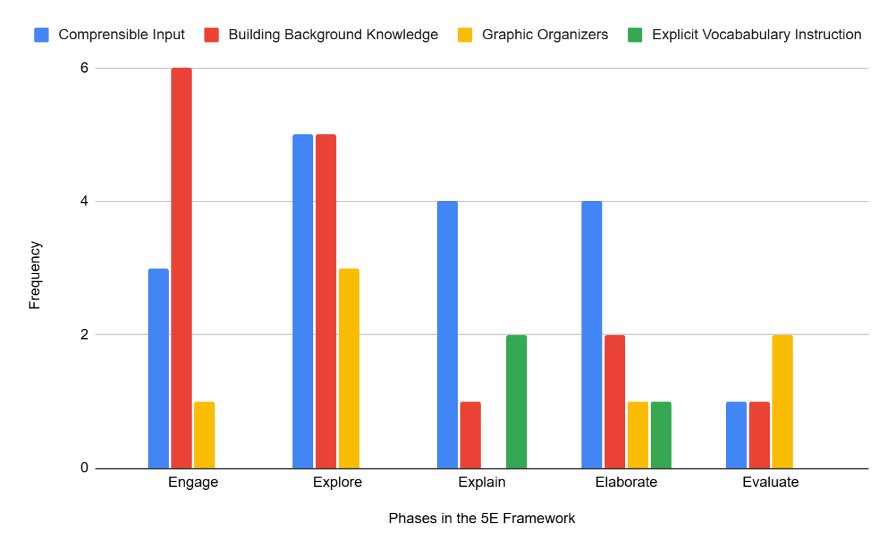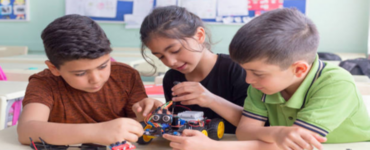Renee Ullom & Bailey Nafziger
Preparing preservice teachers to tailor their science instruction is crucial for ensuring equitable education in their future classrooms. This study explores how preservice teachers used strategies to support multilingual learners, where the strategies were integrated within a unit aligned with the 5E science teaching framework, and how the choices mutually support science learning and second language acquisition.
Keywords: Next Generation Science Standards, 5E Science Framework, multilingual learners, teacher education
The intersection of science education and multilingual learner instruction
It is clear that our nation’s demographics are changing and will continue to change. In the U.S., approximately one in five students come from a home that speaks a language other than English (National Center for Education Statistics, 2025). With these statistics taken into account, teachers must consider how to integrate equitable practices into their instruction that allow diverse populations––in this study specifically, multilingual learners (MLs)––to access content while learning English. Current stances encourage an asset-based perspective of MLs, emphasizing that language is not a prerequisite to learning content but rather “a product of interaction and learning” (National Academies of Sciences Engineering and Medicine, 2018, p. 99)
Multilingual instruction is uniquely positioned to capitalize on the affordances provided through the Next Generation Science Standards (NGSS). NGSS are grounded in sensemaking, challenging students to figure out science rather than being taught science (NGSS Leads States, 2013). The paradigm shift requires teachers to create learning environments that are contextual, hands-on, rich in discussion, and collaborative. When merging NGSS instruction with best practices in ML instruction, teachers can create dynamic and inclusive learning environments for all students to thrive.
Next Generation Science Standards are structured into three dimensions: disciplinary core ideas (DCIs), crosscutting concepts (CCCs), and science and engineering practices (SEPs). When woven together, three-dimensional instruction requires students to move beyond the linear scientific method and invites them to become creative problem solvers (National Research Council, 2012). The SEPs articulate skills scientists use, and the CCCs list themes that span across science disciplines, thus ensuring students are mimicking real-world scientists in what they do and how they think when working with core science ideas. This reform-based science instruction emphasizes making science content authentic and relevant to the lives of all students.
SLA meets 5E: Intentionally bridging science and language learning
In this study, we explore how preservice teachers implemented instructional strategies for MLs within an NGSS-aligned science lesson, paying particular attention to the sequence of the lesson and the goal of the ML instructional strategy. The work is grounded in Lee et al. ’s (2019) framework, which combines science and second language acquisition (SLA) principles to mutually support one another. The framework identifies two specific targets, namely “(a) a perspective, which provides the framing for promoting sciences and language learning with [English learners, or ELs], and (b) science and language design principles, which describe specific guidelines for developing instructional materials to support such learning” (Lee et al., 2019, p. 319). The six design principles include (Lee et al., 2019):
- Language Design Principle 1: ELs use multiple modalities in increasingly strategic ways.
- Language Design Principle 2: ELs use an increasingly specialized register of talk and text.
- Language Design Principle 3: ELs use multiple modalities and registers to meet the communicative demands of different types of interactions.
- Science Design Principle 1: ELs explain phenomena in the natural world and design solutions to problems in the designed world
- Science Design Principle 2: ELs engage in three-dimensional learning
- Science Design Principle 3: ELs build their understanding over the course of instruction.
The purpose of English language instruction is to build academic language skills needed for success in all subject areas, support oral language development to improve communication and comprehension, and help students meet state academic standards while acquiring English (Georgia Department of Education, 2025; Minnesota Department of Education, 2024). Ultimately, teachers of MLs and content area teachers must share the responsibility and accountability of making this an obtainable goal and ensuring MLs’ success (Mavrogordato et al., 2024).
The 5E science instructional strategy (i.e., Engage, Explore, Explain, Elaborate, and Evaluate) offers numerous benefits by promoting collaborative, student-centered learning (Bybee & Landes, 1990). One key advantage of the explore before explain approach is allowing students to investigate and interact with new concepts before introducing formal vocabulary, which is in alignment with Lee et al.’s (2019) Science Design Principle 3, allowing MLs the opportunity to build their understanding throughout instruction. For this study, we modified expectations for the traditional 5E lesson sequence by requiring preservice teachers (PSTs) to include a phenomenon in the ‘Engage’ portion of the lesson (science design principle 1) and requiring at least one SEP and one CCC to be embedded into instruction (science design principle 2).
Framing the study: Building preservice teacher expertise in ML instruction
The context of this study was an online, semester-long elementary science methods course conducted at a large public university in the southeastern United States. Participants were all PSTs (n=11) in the last year of their initial teacher preparation program. While the course is primarily focused on developing elementary science pedagogical content knowledge, elements of instruction for MLs were integrated into each module to better prepare preservice teachers for the authenticity of real-world teaching.
Students were provided direct instruction on ML strategies through pre-recorded videos within the asynchronous online modules (see Table 1). Leaning on the Science Learning and Language Learning Principles of Lee et al. (2019), the instructional strategy videos were incorporated to create foundational knowledge for supporting MLs, which could be applied throughout the 5E Science Framework.
| Strategy | Use | Design Principle (Lee, et al., 2019) |
| Comprehensible Input | Providing understanding through content (e.g., hand gestures, pictures, media, simplification of instruction) | Language Design Principle 3 |
| Explicit Vocabulary Instruction | Providing context through multiple modalities | Language Design Principle 1
Language Design 2 |
| Activating Prior Knowledge/Building Background Knowledge | Assessing funds of knowledge and creating context for application | Language Design Principle 3
Language Design 2 |
| Graphic Organizers | Supporting the use of multiple modalities and registers, including Basic Interpersonal Communication (BICs) and Cognitive Academic Language Proficiency (CALP), (Cummins, 2000) | Language Design Principle 3 |
Table 1. ML Strategies Covered in Direct Instruction
In addition to direct instruction, PSTs analyzed WIDA ELD standards (2020), student proficiency levels, and instructional strategy implementation through case studies on weekly discussion board prompts. As a culminating project, PSTs created a phenomenon-based, three-dimensional 5E unit. Data were collected through pre- and post-surveys along with the final 5E unit plans. Deductive coding was used to identify which instructional strategies were planned and where the strategies were placed within the PST’s unit plans. Researchers coded simultaneously to establish intercoder reliability.
From awareness to application: PSTs’ evolving understanding of ML strategies in science
Through careful examination of the lesson plans, two salient themes were identified: (1) PSTs increased their understanding of teaching strategies for MLs across the course, and (2) PSTs successfully implemented teaching strategies within the 5E framework at appropriate places, therefore bridging the gap between SLA and 5E science instruction.
Theme 1: Building a toolkit for ML instruction
Over the semester, PSTs demonstrated an increased understanding and ability to apply instructional strategies to support MLs’ science learning. When asked to elaborate on which ML instructional strategies PSTs believed to be most beneficial or have seen implemented in elementary science, most students (n=5 out of 11) were coded as comprehensible input by suggesting strategies such as “not make them take a paper and pencil test” (PST participant 6) or to provide “pictures” (PST participant 3). A surprising number of PSTs mentioned not seeing or knowing any strategies to support MLs in the classroom (n=4). Throughout the pre-survey, there was a focus on affective support for MLs, such as the “most beneficial would be a teacher that has patience” (PST participant 2) or encouraging MLs to “learn as best as they can” (PST participant 6). While the focus on building a supportive environment for MLs is a viable goal for instruction, there was a definite lack of academic or content-specific language expectations.
In the post-survey, all participants could name at least one strategy to support MLs in elementary science, and many participants were coded as listing multiple instructional strategies (n=5). PST participant 6, for example, no longer relied on the students to do their best but saw herself as being able to be proactive within her planning to support MLs:
The strategies that I have seen that are most beneficial are comprehensible input strategies like visuals, sentence stems, graphic organizers, and models. I also believe slowing speech while going over lesson content and gestures are beneficial methods to use for EL students during a science lesson. Additionally, the use of Hands-on activities is also a great resource to use for EL students in an elementary science lesson.
In the post-survey, instructional strategies such as incorporating “small groups” (PST participant 2), “providing multiple modalities for content (PST participant 8), and “the use of vocabulary organizers” (PST participant 10) were expanded on, highlighting the PSTs’ more salient understanding of practical applications of Lee et al.’s (2019) Language and Science Design Principles.
Theme 2: Purposeful placement of ML strategies within science instruction
In the 5E unit plans submitted at the end of the course, most PSTs effectively integrated ML strategies into the 5E framework to enhance science instruction and language development. For example, over half of the participants capitalized on introducing the phenomenon in the Engage phase to help MLs build background knowledge before engaging with the science content (see Figure 1). Effective use of a phenomenon in the Engage phase aligns with Lee et al.’s (2019) Science Design Principle 3 by helping MLs build their understanding throughout instruction and Language Design Principle 3 by allowing MLs to use BICS to engage with the phenomenon and therefore scaffolding toward their use of CALP.
PSTs used graphic organizers during the Explore phase, and explicit vocabulary instruction during the Explain phase served as scaffolds to move MLs from BICS to CALP. The scaffolds that come naturally within the 5E framework support Language Design Principle 2, which requires MLs to use an increasingly specialized register of talk and text throughout the unit. The use of graphic organizers and comprehensible input strategies in the Explore phases, paired with activities that emphasize three-dimensional science learning (Science Design Principle 2) allows all learners to successfully explain phenomena in the natural world with appropriate content-specific language.

Contributions and implications of ML-focused science instruction in teacher preparation
This study contributes to the growing body of research at the intersection of science education and multilingual learner instruction, highlighting the importance of equitable access to content area curriculum for multilingual learners while they acquire English. Recognizing that the understanding of the importance of this intersection begins in initial teacher preparation programs, this research highlights the positive effect of providing explicit instruction to preservice teachers on ML strategies, aligning second language acquisition principles with the 5E model. It highlights the potential of structured, inquiry-based learning to enhance both science comprehension and language development for MLs.
It would be beneficial for future research to explore the long-term impact of explicit instruction on integrating ML strategies with NGSS-aligned instruction as preservice teachers become in-service teachers. Examining how these strategies translate into classroom practice beyond a controlled academic setting would provide deeper insights into their effectiveness and sustainability.
References
Bybee, R., & Landes, N. M. (1990). Science for life and living: An elementary school science program from Biological Sciences Improvement Study (BSCS). The American Biology Teacher, 52(2), 92-98.
Cummins, J. (2000). Language, power, and pedagogy: Bilingual children in the crossfire. Multilingual Matters.
Georgia Department of Education. (2025). ESOL language program. Georgia Department of Education. https://gadoe.org/learning/esol-language-program/
Lee, O., Llosa, L., Grapin, S., Haas. A., & Goggins, M. (2019). Science and language integration with English learners: A conceptual framework guiding instructional materials developed. Science Education, 103(2), 317-337. https://doi.org/10.1002/sce.21498
Mavrogordato, M., Bartlett, C., Callahan, R., DeMatthews, D., & Izquierdo, E. (2024, April). Supports for multilingual students who are classified as English learners. EdResearch for Action. https://edresearchforaction.org/research-briefs/supports-for-multilingual-students-who-are-classified-as-english-learners/
Minnesota Department of Education. (2024). English learner education. Minnesota Department of Education. https://education.mn.gov/MDE/dse/el/
National Academies of Sciences, Engineering, and Medicine. (2018). English learners in STEM subjects: Transforming classrooms, schools, and lives. The National Academies Press. https://doi.org/10.17226/25182
National Center for Education Statistics. (2025). English learners in public schools. Condition of Education. U.S. Department of Education, Institute of Education Sciences. https://nces.ed.gov/programs/coe/indicator/cgf/english-learners-in-public-schools
National Research Council. (2012). A framework for K-12 science education: Practices, crosscutting concepts, and core ideas. The National Academies Press.
NGSS Lead States. (2013). Next generation science standards: For states, by states. Retrieved from https://www.nextgenscience.org/get-know-standards
WIDA. (2020). WIDA English language development standards framework, 2020 edition. Wisconsin Center for Education Research, University of Wisconsin-Madison, Board of Regents of the University of Wisconsin System. https://wida.wisc.edu/resources/wida-english-language-development-standards-framework-2020-edition












